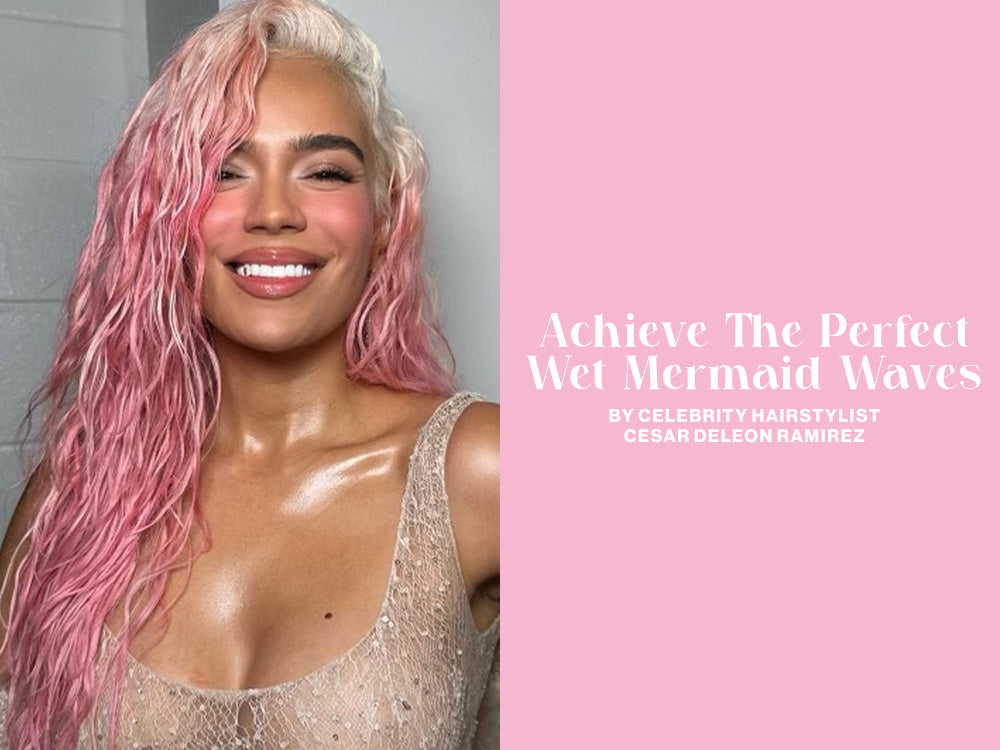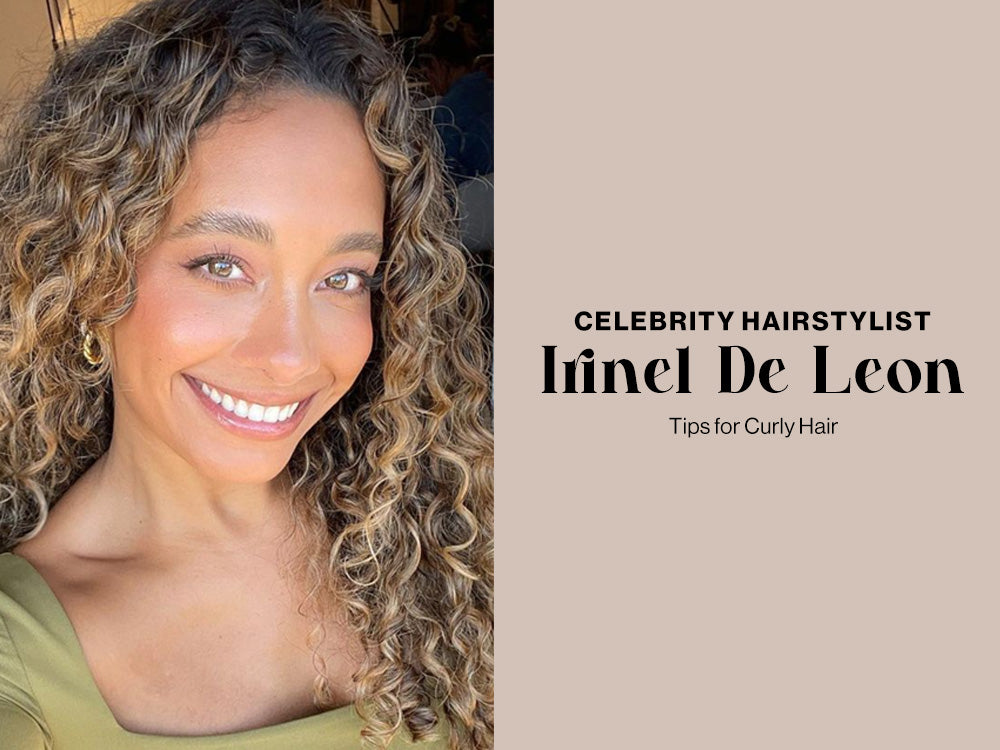Is the Curly Girl Method Bad for Your Scalp?

Women with textured hair have been encouraged for years — since the days of the Curly Girl Method to be exact — to ditch their shampoos and co-wash (a.k.a wash with conditioner), to achieve softer and more defined curls. But in recent years, many of us have learned that while using a cleansing conditioner might actually make hair feel softer or seem “healthier,” it can actually do way more harm than good.
“Co-washing is harmful to the scalp because you are not removing build-up from hair products, dirt, or natural oil that secretes from the scalp called sebum,” says IAT certified trichologist and licensed cosmetologist, Sophia Emmanuel. “Collectively, all these things sit on the scalp and can trigger hair loss, dandruff, itching, and inflammation of the scalp. Excess build-up of any kind, for example: product, dirt, and dead skin cells do not create a healthy environment for your hair to grow and are one of the common causes of scalp disorders. This is why using a pH balanced shampoo that gently cleanses and removes build-up is a better option than co-washing.”
While women who co-wash and never use a pH balancing clarifying shampoo may not necessarily experience scalp issues right away, things like itchy scalp, dandruff, dry scalp, flakiness, redness, scaling and even hair loss are things that can eventually become a reality for them. Many experts compare co-washing to using a lotion to wash your hair.
“COVID really highlighted how people should be washing their hands frequently, that you need soap to thoroughly wash your body, and in the same way, that you need shampoo to wash your scalp,” our Rizos Curls founder, Julissa Prado says. “A lot of people don’t realize that shampoo is primarily for your scalp. So a lot of times people are just applying shampoo to their hair, but not actually using it to wash their scalp and really scrubbing and cleansing it. In the simplest of terms, shampoo is for your scalp and conditioner is for the rest of your hair. Conditioners usually have a lot of butters and heavy oils and all those ingredients are really great at conditioning and moisturizing and hydrating your hair. But in the same way that using heavy butters or oils might clog your pores on your face, these ingredients can also cause buildup on your scalp if you are not regularly shampooing.”
You Want to Make Sure You Switch to a Shampoo that Actually Lathers
“It is important to use a shampoo that lathers because it will remove the excess build-up of your scalp and hair,” says Emmanuel. “It will help reduce dandruff, itching, and other common scalp disorders that can take place from using co-washing products to cleanse. Also, your curls may not receive proper moisture from conditioners and stylers may not work as well as they should if there is excess build-up on the hair.”
Choosing the right shampoo is just as important. We recommend opting for a gentle clarifying sulfate-free shampoo like the Rizos Curls Hydrating Shampoo, that’s going to thoroughly cleanse your scalp without drying out your hair. Or look for a formula that lathers but doesn’t contain harsh ingredients like silicones that are too heavy for your scalp and may cause adverse effects.
“There is some truth to shampoos drying out curls. This has a lot to do with the pH of the shampoo,” Emmanuel says. “In order to prevent dryness, stick to a pH that is between 5.5 and 6.5. Also, you can use shampoos that are labeled moisturizing or detangling in order to prevent dryness that may take place after you finish shampooing your hair.”
It is important to use a shampoo with a balanced pH, such as the Rizos Curls Hydrating Shampoo with balanced pH levels between 4-6. The pH scale ranges from 0-14 and the higher the pH level, the harsher the shampoo is on your hair. The pH of hair naturally lives between 4.5-5. You should generally avoid shampoos with a pH higher than 7, as they may cause dryness, scalp irritation, and frizz.
Invest in a Scalp Brush
“I highly recommend purchasing a shampoo brush,” says certified trichologist, holistic beauty expert, and owner of Studio Niki Spice in Brooklyn. “The bristles are soft [enough] for the scalp and gentle enough to massage, help lift buildup, and an easy way to detangle. We don’t have to fight with our hair when it comes to wash day. Listen to the instructions your hair gives and obey them.” Try the Rizos Curls Pink Scalp Massage Brush.
Figure Out How Often You Need to Wash
While most trichologists and scalp experts recommend washing your hair at least 1-2 times a week, Prado recognizes that with different scalps come different needs. Last month she started the #NoProductChallenge on Instagram to encourage Rizos Curls customers and followers to analyze their hair needs.
“Some people’s scalps naturally don’t produce as much oil. Everyone is different but you still need to shampoo your scalp and hair. So what I always like to tell people is to start with the #NoProductChallenge,” she says. "With no products in your hair, what does your hair actually look like and when does your hair naturally start producing oils? Smell it and observe it. Observe your scalp and hair for 5 days. Don’t be afraid to scratch your scalp a little bit and thoroughly analyze it to figure out how much oil your hair is producing by day two, three, four, and five. I’d even suggest keeping a hair journal. That way you can see if you need to be shampooing once a week, twice a week, every other week etc. What people don’t realize is the same way the skin on our face changes with weather, diet, water intake, and hormonal changes, so does our scalp”
Do a DIY treatment
If you’re struggling with dry scalp, flakes, buildup and even hair loss, before doing anything Prado suggests trying her favorite DIY treatment using aloe vera. “I recommend taking the plant itself and peeling it on one side like a banana and taking the side with the pulp and massaging it directly onto your scalp throughout your head,” she says. “I use the side that still has skin to grip on. Once you’ve massaged your whole head with the aloe gel, leave it on for at least 20-30 minutes and then shampoo afterwards using a scalp brush.”
Prado is also a big fan of apple cider vinegar rinses to help remove buildup and detox the scalp. Simply mix a few tablespoons (2-3) of apple cider vinegar in a full glass of water. Pour the rinse over your hair, working it into your scalp. Let it sit for a few minutes before rinsing it out with cool water and then shampooing it out.
“We actually have one in the works. We are working on something very special to make that process easier and minimize the stench of apple cider vinegar,” Prado says.
Do pre-poo scalp treatments
“To prioritize the health of your scalp, you can prevent wearing hairstyles that pull or place tension on the scalp — this can cause hair loss,” says Emmanuel. “Also, you can use scalp masks which are pre-scalp treatments that detox the scalp. They help deep cleanse the scalp to create a healthy environment for your hair to grow.”
Go the extra mile for your scalp
“Schedule an appointment to see a trichologist to get your scalp analyzed,” says Spice. “Schedule an exfoliation dermabrasion treatment. Keeping up with treatments as recommended. Proper scalp care practices at home, which includes washing on time and using products that encourage a healthy scalp. Use a satin pillowcase since cotton will cause drying hair and scalp. Proper diet is important as what you feed your body reflects on the scalp and hair. Take your multivitamins and biotin. Make sure your visits are scheduled with your PCP. Be patient with your hair and scalp healthy journey.”

Johanna Ferreira is a writer, journalist, editor, and content consultant specializing in the intersections of beauty, wellness, and culture. She previously worked as the Deputy Editor of HipLatina (under H Code Media) and is currently a freelance writer who has written for a number of notable media outlets including Oprah Mag, Allure, InStyle, Refinery29, Travel + Leisure, Well + Good, Pop Sugar, The Americano, and Healthline.

